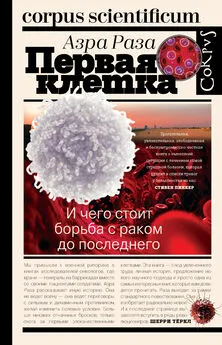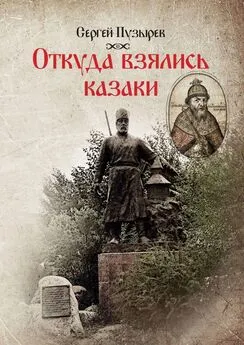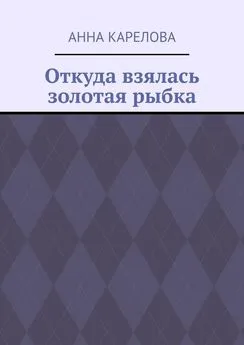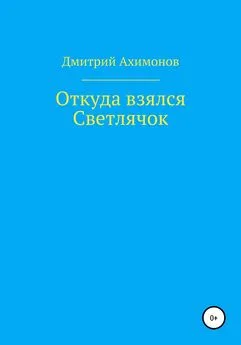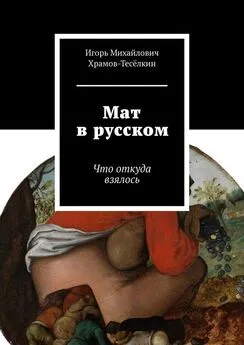Афина Актипис - Клетка-предатель. Откуда взялся рак и почему его так трудно вылечить
- Название:Клетка-предатель. Откуда взялся рак и почему его так трудно вылечить
- Автор:
- Жанр:
- Издательство:ООО «ЛитРес», www.litres.ru
- Год:2020
- ISBN:нет данных
- Рейтинг:
- Избранное:Добавить в избранное
-
Отзывы:
-
Ваша оценка:
Афина Актипис - Клетка-предатель. Откуда взялся рак и почему его так трудно вылечить краткое содержание
Клетка-предатель. Откуда взялся рак и почему его так трудно вылечить - читать онлайн бесплатно ознакомительный отрывок
Интервал:
Закладка:
SantamaríaFríes, M., L. F. Fajardo, M. L. Sogin, P. D. Olson, and D. A. Relman. “Lethal Infection by a Previously Unrecognised Metazoan Parasite”. Lancet 347, no. 9018 (June 1996): 1797–1801.
Scanlon, E. F., R. A. Hawkins, W. W. Fox, and W. S. Smith. “Fatal Homotransplanted Melanoma: A Case Report”. Cancer 18 (June 1965): 782–89.
Schiffman, Joshua D., and Matthew Breen. “Comparative Oncology: What Dogs and Other Species Can Teach Us about Humans with Cancer”. Philosophical Transactions of the Royal Society of London, Series B: Biological Sciences 370, no. 1673 (July 2015). https://doi.org/10.1098/rstb.2014.0231.
Schiffman, Joshua D., Richard M. White, Trevor A. Graham, Qihong Huang, and Athena Aktipis. “The Darwinian Dynamics of Motility and Metastasis”. In Frontiers in Cancer Research, 135–76. New York: Springer, 2016.
Scott, Alasdair J., Claire A. Merrifield, Jessica A. Younes, and Elizabeth P. Pekelharing. “Pre, Proand Synbiotics in Cancer Prevention and Treatment— A Review of Basic and Clinical Research”. ecancermedicalscience 12 (September 2018): 869.
Siddle, Hannah V., and Jim Kaufman. “A Tale of Two Tumours: Comparison of the Immune Escape Strategies of Contagious Cancers”. Molecular Immunology 55, no. 2 (September 2013): 190–93.
Siegel, R. L., K. D. Miller, and A. Jemal. “Cancer Statistics, 2018”. CA: A Cancer Journal for Clinicians 68, no. 1 (2018): 7–30.
Smith, K. R., H. A. Hanson, G. P. Mineau, and S. S. Buys. “Effects of BRCA1 and BRCA2 Mutations on Female Fertility”. Proceedings of the Royal Society of London, Series B 279, no. 1732 (2011): 1389–95. https://doi.org/10.1098/rspb.2011.1697.
Sober, Elliott, and David Sloan Wilson. Unto Others: The Evolution and Psychology of Unselfish Behavior. Cambridge, MA: Harvard University Press, 1998.
Sonnenschein, C., and A. M. Soto. The Society of Cells: Cancer and Control of Cell Proliferation. New York: Springer, 1999.
Sprouffske, Kathleen, C. Athena Aktipis, Jerald P. Radich, Martin Carroll, Aurora M. Nedelcu, and Carlo C. Maley. “An Evolutionary Explanation for the Presence of Cancer Non-stem Cells in Neoplasms”. Evolutionary Applications 6, no. 1 (January 2013): 92–101.
Ståhl, Patrik L., Henrik Stranneheim, Anna Asplund, Lisa Berglund, Fredrik Pontén, and Joakim Lundeberg. “Sun-Induced Nonsynonymous p53 Mutations Are.Extensively Accumulated and Tolerated in Normal Appearing Human Skin”. Journal of Investigative Dermatology 131, no. 2 (February 2011): 504–8.
Sulak, Michael, Lindsey Fong, Katelyn Mika, Sravanthi Chigurupati, Lisa Yon, Nigel P. Mongan, Richard D. Emes, and Vincent J. Lynch. “TP53 Copy Number Expansion Is Associated with the Evolution of Increased Body Size and an Enhanced DNA Damage Response in Elephants”. eLife 5 (September 2016). https://doi.org/10.7554/eLife.11994.
Summers, K., J. da Silva, and M. A. Farwell. “Intragenomic Conflict and Cancer”. Medical Hypotheses 59, no. 2 (August 2002): 170–79.
Sun Tzu. The Art of War: Complete Texts and Commentaries. Translated by the Denma Translation Group. Boulder, CO: Shambhala Classics, 2005.
Tai, Guangping, Michael Tai, and Min Zhao. “Electrically Stimulated Cell Migration and Its Contribution to Wound Healing”. Burns and Trauma 6 (July 9, 2018): 20.
Temel, Jennifer S., Joseph A. Greer, Alona Muzikansky, Emily R. Gallagher, Sonal Admane, Vicki A. Jackson, Constance M. Dahlin, et al. “Early Palliative Care for Patients with Metastatic Non-Small-Cell Lung Cancer”. New England Journal of Medicine 363, no. 8 (August 2010): 733–42.
Thomas, Frédéric, Thomas Madsen, Mathieu Giraudeau, Dorothée Misse, Rodrigo Hamede, Orsolya Vincze, François Renaud, Benjamin Roche, and Beata Ujvari. “Transmissible Cancer and the Evolution of Sex”. PLoS Biology 17, no. 6 (June 2019): e3000275.
Tiede, Benjamin, and Yibin Kang. “From Milk to Malignancy: The Role of Mammary Stem Cells in Development, Pregnancy and Breast Cancer”. Cell Research 21, no. 2 (February 2011): 245–57.
Tollis, Marc, Jooke Robbins, Andrew E. Webb, Lukas F. K. Kuderna, Aleah F.
Caulin, Jacinda D. Garcia, Martine Bèrubè, et al. “Return to the Sea, Get Huge, Beat Cancer: An Analysis of Cetacean Genomes Including an Assembly for the Humpback Whale (Megaptera Novaeangliae)”. Molecular Biology and Evolution 36, no. 8 (August 2019): 1746–63.
Topalian, Suzanne L., F. Stephen Hodi, Julie R. Brahmer, Scott N. Gettinger, David C. Smith, David F. McDermott, John D. Powderly, et al. “Safety, Activity, and Immune Correlates of AntiPD-1 Antibody in Cancer”. New England Journal of Medicine 366, no. 26 (June 2012): 2443–54.
Trigos, Anna S., Richard B. Pearson, Anthony T. Papenfuss, and David L. Goode. “Altered Interactions between Unicellular and Multicellular Genes Drive Hallmarks of Transformation in a Diverse Range of Solid Tumors”. Proceedings of the National Academy of Sciences of the United States of America 114, no. 24 (June 2017): 6406–11.
Trivers, Robert L. “The Evolution of Reciprocal Altruism”. Quarterly Review of Biology 46, no. 1 (March 1971): 35–57.
Turajlic, Samra, and Charles Swanton. “Metastasis as an Evolutionary Process”. Science 352, no. 6282 (April 2016): 169–75.
Turner, Kristen M., Viraj Deshpande, Doruk Beyter, Tomoyuki Koga, Jessica Rusert, Catherine Lee, Bin Li, et al. “Extrachromosomal Oncogene Amplification. Drives Tumour Evolution and Genetic Heterogeneity”. Nature 543 (February 2017): 122.
Ukraintseva, Svetlana V., Konstantin G. Arbeev, Igor Akushevich, Alexander Kulminski, Liubov Arbeeva, Irina Culminskaya, Lucy Akushevich, and Anatoli I. Yashin. “Trade-Offs between Cancer and Other Diseases: Do They Exist and Influence Longevity?” Rejuvenation Research 13, no. 4 (August 2010): 387–96.
Vaughan, Thomas L., Linda M. Dong, Patricia L. Blount, Kamran Ayub, Robert D. Odze, Carissa A. Sanchez, Peter S. Rabinovitch, and Brian J. Reid. “NonSteroidal Anti-Inflammatory Drugs and Risk of Neoplastic Progression in Barrett’s Oesophagus: A Prospective Study”. Lancet Oncology 6, no. 12 (December 2005): 945–52. https://doi.org/10.1016/S14702045(05)704319.
Vousden, Karen H., and Xin Lu. “Live or Let Die: The Cell’s Response to p53”. Nature Reviews Cancer 2, no. 8 (August 2002): 594–604.
Waldman, Katy. “ We’re Finally Winning the Battle against the Phrase ‘ Battle with Cancer’ ”. Slate, July 30, 2015. https://slate.com/human-interest/2015/07/how-battle-with-cancer-is-being-replaced-by-journey-with-cancer.html
Walsh, Justin T., Simon Garnier, and Timothy A. Linksvayer. “Ant Collective Behavior Is Heritable and Shaped by Selection ”. bioRxiv (March 2019): 567503.
Wang, Xu, Donald C. Miller, Rebecca Harman, Douglas F. Antczak, and Andrew G. Clark. “Paternally Expressed Genes Predominate in the Placenta”. Proceedings of the National Academy of Sciences of the United States of America 110, no. 26 (June 2013): 10705–10.
Wang, Yu, Chenzhou Zhang, Nini Wang, Zhipeng Li, Rasmus Heller, Rong Liu, Yue Zhao, et al. “Genetic Basis of Ruminant Headgear and Rapid Antler Regeneration”. Science 364, no. 6446 (June 2019). https://doi.org/10.1126/science.aav6335.
Wasielewski, H., J. Alcock, and A. Aktipis. “Resource Conflict and Cooperation between Human Host and Gut Microbiota: Implications for Nutrition and Health”. Annals of the New York Academy of Sciences 1372, no. 1 (2016): 20–28.
Whisner, C., and A. Aktipis. “The Role of the Microbiome in Cancer Initiation and Progression: How Microbes and Cancer Cells Utilize Excess Energy and Promote One Another’s Growth”. Current Nutrition Reports 8, no. 1 (March 2019): 42–51.
White, Philip R., and Armin C. Braun. “A Cancerous Neoplasm of Plants: Autonomous Bacteria-Free Crown-Gall Tissue”. Cancer Research 2, no. 9 (1942): 597–617.
Wirén, Sara, Christel Häggström, Hanno Ulmer, Jonas Manjer, Tone Bjørge, Gabriele Nagel, Dorthe Johansen, et al. “Pooled Cohort Study on Height and Risk of Cancer and Cancer Death”. Cancer Causes and Control 25, no. 2 (February 2014): 151–59.
Witherow, Beth Ann, Gregory S. Roth, Mark A. Carrozza, Ronald W. Freyberg, Jonathan E. Kopke, Rita R. Alloway, Joseph F. Buell, et al. “The Israel Penn International Transplant Tumor Registry”. AMIA Annual Symposium Proceedings (2003): 1053.
Wu, Shaoguang, KiJong Rhee, Emilia Albesiano, Shervin Rabizadeh, Xinqun Wu, HungRong Yen, David L. Huso, et al. “A Human Colonic Commensal Promotes. Colon Tumorigenesis via Activation of T Helper Type 17 T Cell Responses”. Nature Medicine 15, no. 9 (September 2009): 1016–22.
Wynendaele, Evelien, Frederick Verbeke, Matthias D’Hondt, An Hendrix, Christophe Van De Wiele, Christian Burvenich, Kathelijne Peremans, Olivier De Wever, Marc Bracke, and Bart De Spiegeleer. “Crosstalk between the Microbiome and Cancer Cells by Quorum Sensing Peptides”. Peptides 64 (February 2015): 40–48.
Yokoyama, Akira, Nobuyuki Kakiuchi, Tetsuichi Yoshizato, Yasuhito Nannya, Hiromichi Suzuki, Yasuhide Takeuchi, Yusuke Shiozawa, et al. “Age-Related Remodelling of Oesophageal Epithelia by Mutated Cancer Drivers”. Nature 565, no. 7739 (January 2019): 312–17.
Zhang, Jingsong, Jessica J. Cunningham, Joel S. Brown, and Robert A. Gatenby.
“Integrating Evolutionary Dynamics into Treatment of Metastatic Castrate-Resistant Prostate Cancer”. Nature Communications 8, no. 1 (November 2017): 1816.
Отзыв российского специалиста
Эта книга заставит вас посмотреть на рак по-другому! В этом заявлении нет ничего сенсационного. Любое явление в биологии можно рассмотреть с точки зрения различных дисциплин. Об онкологических заболеваниях мы знаем, как об одной из самых распространенных причин смертности в мире. К сожалению, с этим заболеванием напрямую или нет сталкивались очень многие. Мы с облегчением узнаем о новых методах лечения. Мы знаем, что курение, долгое нахождение на солнце и другие факторы повышают риск новообразований. Но мало кто задумывается, почему рак существует?
В этой книге посмотрим на рак глазами специалиста по эволюционной биологии и психологии, а также биологии рака Афины Актипис.
Эта книга поможет осмыслить, что онкологические заболевания — это часть нас самих. И не только человека, но и любого многоклеточного существа: от кактуса до тасманийского дьявола. Рак возникает из-за того, что в организмах, где нужно скоординировать работу стольких клеток, неизбежно возникают недобросовестные клетки, которые отказываются подчиняться правилам.
Другой интересный вопрос — почему такие клетки побеждают? И тут мы снова посмотрим на рак с точки зрения эволюции и экологии. Ведь в наших организмах практически целая экосистема со своими правилами и законами, к которой раковым клеткам предстоит приспособиться путем естественного отбора и создать злокачественную опухоль или быть побежденными организмом, который противодействует этому.
Читать дальшеИнтервал:
Закладка:


